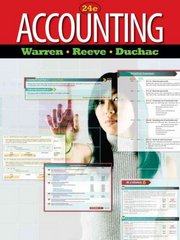Question
Question a) Determine the break-even in sales dollars for the Skinny-Bar product and show a variable costing income statement based on the information provided in
Question
a) Determine the break-even in sales dollars for the Skinny-Bar product and show a variable costing income statement based on the information provided in Exhibit 1 for actual sales. The income statement must include the cost of direct materials, direct labour, variable manufacturing overhead, fixed manufacturing overhead, and fixed general and administrative costs.
b) what will a lifetime cost analysis of Skinny-Bar and propose a selling price for this new product based on BBCC's markup policy. The overhead costs, the batch size, the machine hours per batch, the number of inspections per batch, set up times and the number of product lines should be based on the activity-based analysis prepared in requirement 1 using the batch size for the The-Bar product. Direct labour hours per batch is 22.5. Product costs are based on one product line. Lifetime research and development costs are $900,000 for the Skinny-Bar. Use the activity rates calculated in requirement 1 as well. Compare the proposed price with the selling price set at the time of the initial introduction of this product. Discuss the adequacy of this new proposed price.
Exhibit 1 The Skinny-Bar According to the latest market research, there is a rising health concern resulting from the over-consumption of products with high sugar content. Some think that the industry may be faced with government regulations to lower the sugar content in chocolate bars. While the company hasn't been affected by this yet, it wouldn't take long to feel the effects of a major news network reporting on the confectionary industry's use of sugar in its products. To mitigate this risk, about three years ago, marketing and production managers got together to pilot a chocolate bar called the Skinny-Bar. The product manager, Ned, was able to develop a great-tasting product with stevia as a substitute for sugar. It was introduced into the market in early June of 20X5 as an even healthier version of TheBar. The intention was to take advantage of the peak in demand for chocolate during the Christmas season. Because the advertising campaign was delayed, the general public wasn't aware of the product, and its introduction generated a loss. However, the company managers have been discussing the potential to look at this product again. Should the decision be made to reintroduce the Skinny-Bar, $900,000 ($300,000 per year for three years) of research and development will be needed to get the product ready for market. The company should be able to sell 300,000 bars per year and analysis shows that these levels are likely to hold for the next 10 years. The direct ingredients, direct labour costs and fixed general and administrative expenses from the 20X5 original plan are valid numbers for planning a relaunch. In addition, an activity-based approach for the manufacturing overhead would be best and further information for doing an ABC analysis is provided in the planning notes in Exhibit 6. It would be useful to reprice the Skinny-Bar using the activity-based approach and BBCC's latest markup policy of 20% of full cost. Because Skinny-Bar does not have any particulates, it would be logical to use the ABC activities and analysis from The-Bar to cost the manufacturing overhead for Skinny-Bar. Unfortunately, true financial information for Skinny-Bar is not available because the product information was combined with the costs and revenues of the The-Bar product for the year. The only information about this product is below in Exhibit 1.
Exhibit 1
Planning notes from the 20X5 launch of the Skinny-Bar 20X5
actual sales $288,600
Total manufacturing costs 230,880
(Total manufacturing cost consists of $115,440 in prime costs and $147,186 in conversion costs.)
The contribution margin ratio for this product was 35%.
156,000 bars were sold at $1.85 per bar.
This was a pilot project of the product, so there were no beginning or ending inventories associated with the product. All non-manufacturing costs relating to this product are fixed.
The margin of safety percentage for the product at this sales level was -15%. The profit margins on the company's current products can be found below in Exhibit 2. The most profitable product is the Salt-Lick bar at 25.9%, followed by Alamonde at 19.3% and The-Bar at 18.8%. Budgeted margins were 14.3%, 27.5%, and 35.2% for The-Bar, Alamonde, and Salt-Lick, respectively.



Step by Step Solution
There are 3 Steps involved in it
Step: 1

Get Instant Access to Expert-Tailored Solutions
See step-by-step solutions with expert insights and AI powered tools for academic success
Step: 2

Step: 3

Ace Your Homework with AI
Get the answers you need in no time with our AI-driven, step-by-step assistance
Get Started


